Y-12 Blog
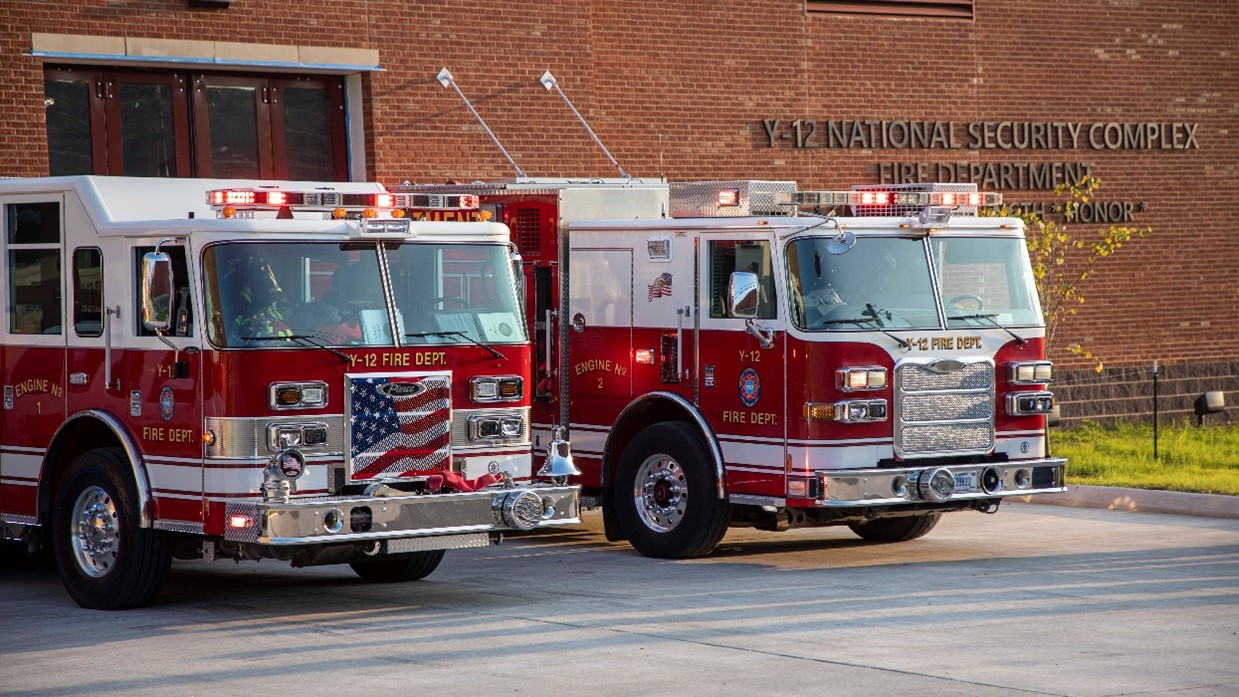
At Y-12 National Security Complex, the landscape continues to transform. The latest new facility to begin operations is a state-of-the-art fire station.
Construction began in the spring of 2021 after 20 years of discussion and planning. When visiting the new Y-12 Fire Station in January of this year, NNSA Administrator Jill Hruby described it as a model construction project for NNSA and the Nuclear Security Enterprise.
On July 24, the Y-12 Fire Department officially moved in, making the station fully operational.
“The new facility will improve our department’s ability to serve the plant and our community,” said Fire Chief James Arnold.
The old fire station building, which was originally constructed in the 1940s and expanded in the ‘60s and ‘80s, has a lot of issues according to Chief Arnold and the firefighters who have used the facility.
“We’ve had to live with some rough conditions for a while,” said Y-12 Fire Department Captain Mike Jeffries, a 17-year veteran of Y-12.
“How do I feel about the move to our new fire hall?” Jeffries asked. He smiled. “I’m happy.”
“The upgraded firehouse will not only improve the working environment for our firefighters but also their lifestyle as it will allow us to transition to a more traditional firefighter schedule. It will also house better and more effective equipment,” said Chief Arnold.
The new fire station is one of two NNSA pilot projects at Y-12 designed to streamline the efficiencies and delivery of construction projects under $50 million. The second project was the newly-constructed Emergency Operations Center.
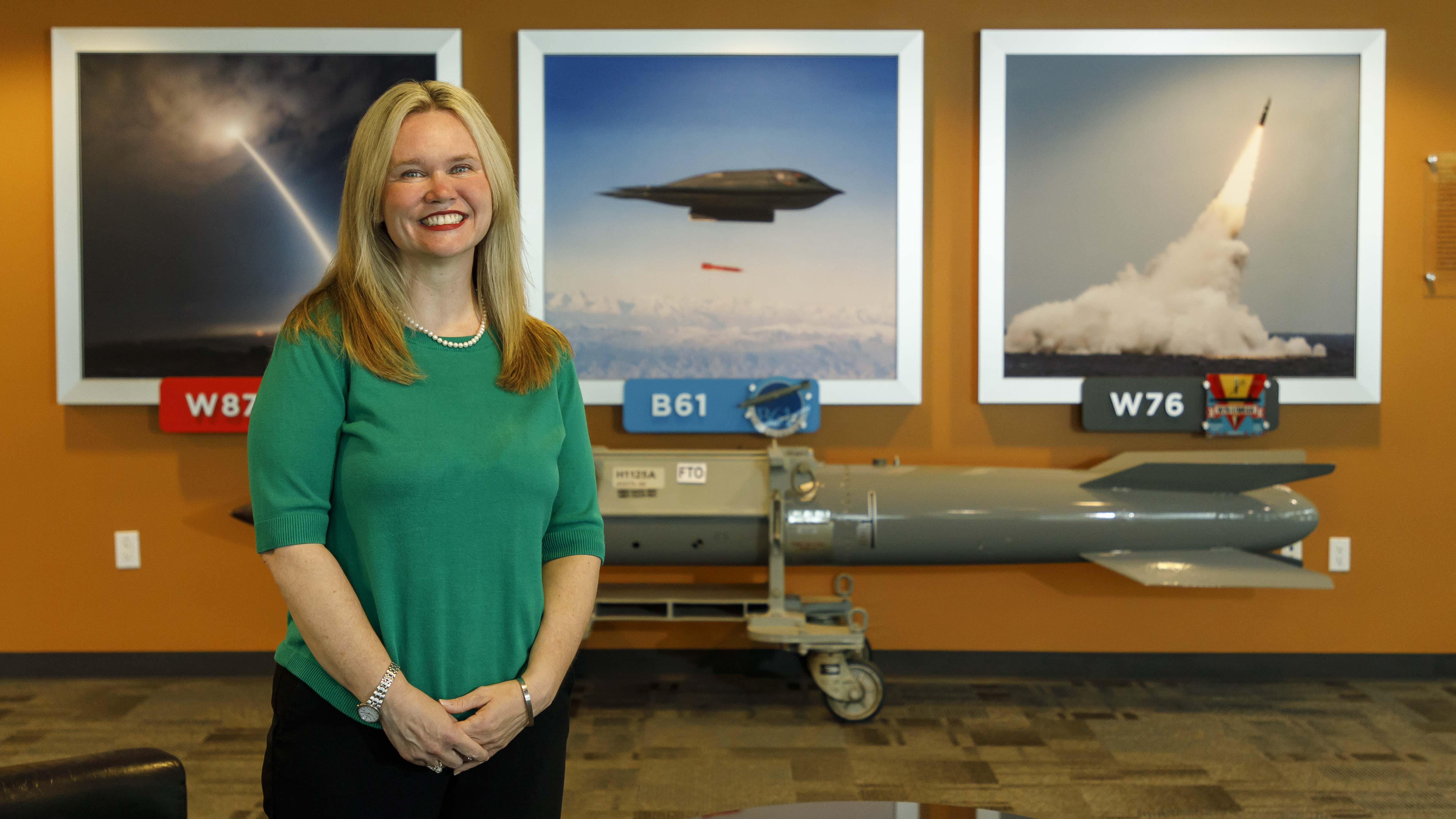
Meet Jan West. She is Y-12 deputy site manager and one of the few women to have served in this role.
All views and opinions are the employee’s own and do not necessarily reflect those of CNS.
Jan West personifies adapt and deliver, embracing challenges headfirst and always with a can-do spirit. “Don’t be afraid to try something new to stretch yourself professionally and personally,” is advice she would offer to any new CNS employee. Throughout her own career, she has done just that.
West grew up in Terre Haute, Indiana, but knew from a young age that she wanted more than to end up working at the local Great Dane Trailer manufacturing facility. She joined the Air Force, eager to take advantage of the opportunities the military could offer. Such opportunities led her to become the first person in her family to graduate from college. The Air Force broadened her horizons and stationed her in Anchorage, Alaska, where she was a Command Center Emergency Action Controller.
West took a leap in February 2010, pivoting her career path and coming to work at Y-12. The American Recovery and Reinvestment Act (ARRA) created a number of jobs on-site during this time and West is one of the employees hired as a result of that funding. She proved herself willing to jump in, learn more, and ask her signature phrase, “How can I help?” She remembers, “One of my favorite jobs here has been serving as an Integration Lead at 9212. I enjoyed seeing all the pieces of the puzzle come together, and being able to fully realize the pride that goes into our work for the nation.”
Her background and leadership experience made her the right fit to later become senior director of Environment, Safety, and Health. When the pandemic began in 2020, she faced an obstacle that put her up against a difficult opponent. “I had to develop and balance protocol actions that ensured the high-quality health and safety standards we have for employees to continue their important work,” West said. She proved instrumental in navigating uncertainty in order to integrate employees back on-site and into their work areas safely.
She said she is honored to hold the title of deputy site manager for Y-12 as one of the few women to have served in the position. When looking to the future, West said, “I look forward to playing a role in the implementation of the site’s strategic long-term planning objectives.”
Are you doing what you envisioned as a young adult? If so, describe how you got here.
As a young adult I thought I would spend my career in the Air Force. I joined the Y-12 team in February 2010 through the ARRA efforts at Alpha 5 and Beta 4 with the Infrastructure team. I have spent time with the Infrastructure organization in different capacities before joining the Environment, Safety, and Health (ES&H) team, serving the site as the Safety and Industrial Hygiene (S&IH) Senior Manager and ES&H Senior Director. I spent time as the acting Senior Director of Quality for Pantex and Y-12 before becoming the Y-12 Deputy Site Manager.
What is your favorite aspect about your work environment? How does that aspect make you know the mission is being met?
The people and the strong sense of community that comes along with being a part of the Y-12 team. The burden of meeting our mission doesn’t rest on one person—it takes all hands on deck. Our workforce is diverse in experience and backgrounds—it takes all areas of expertise to ensure we meet our mission.
How does patriotism factor into your life? Did your level of patriotism change after working at Pantex or Y-12?
I love and support the USA. Y-12’s mission was a major factor for me in seeking an opportunity to join the Y-12 team.
As an employee, what do you want to be remembered for?
I want to be remembered as someone who takes time to listen and is willing to lend a helping hand.
What’s your favorite outside-of-work activity and why?
I have three—beach trips, football, and Christmas festivities—they all involve time with my family.
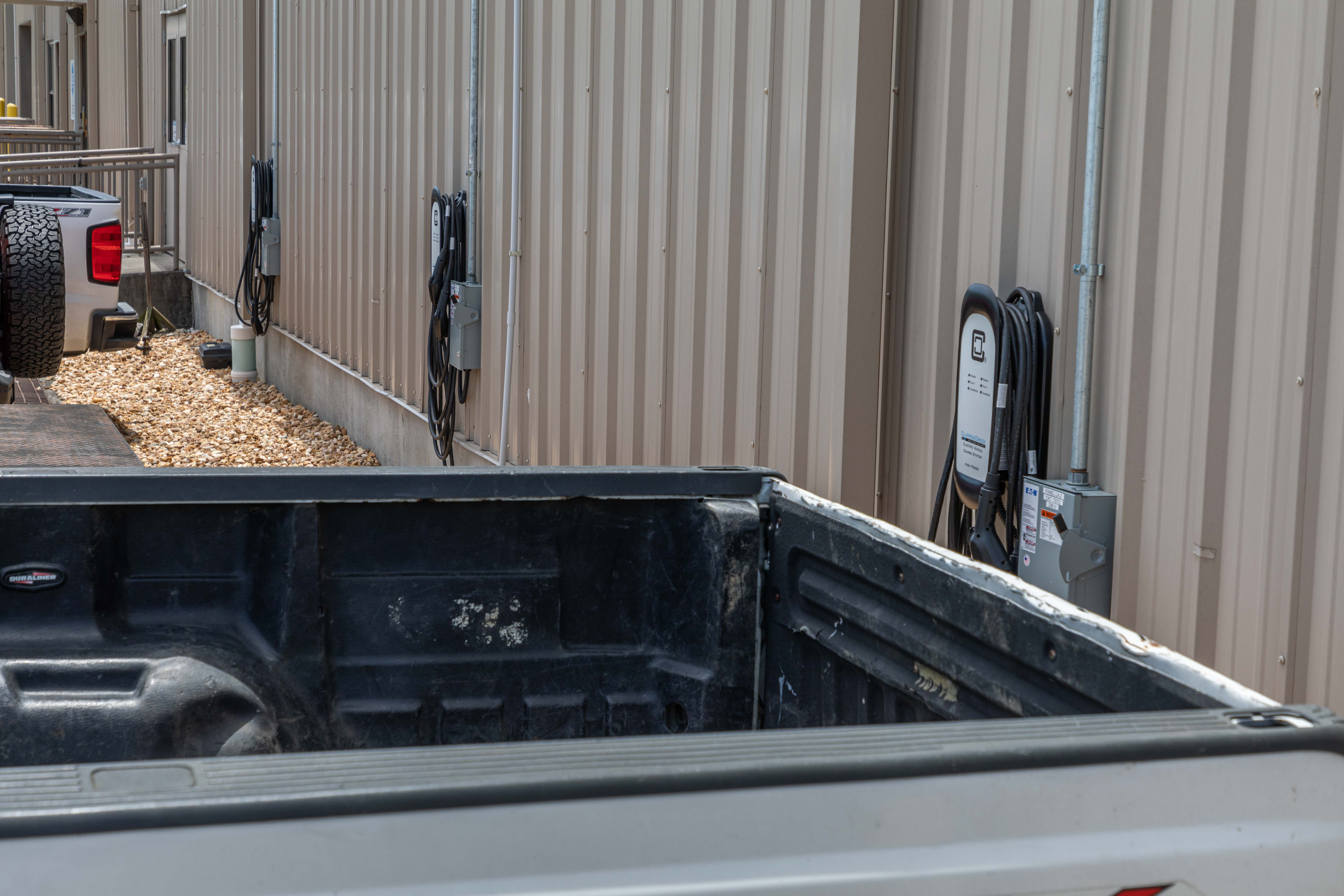
Three charging stations (with a total of six ports) were installed at a Y-12 garage earlier this year.
The road toward a green fleet of vehicles just got a little smoother at Y-12. In May, the Department of Energy (DOE) announced that Y-12 is one of three National Nuclear Security Administration (NNSA) partner sites that received DOE’s first-ever Green Fleet Award.
“This is a great achievement for Y-12, to win a brand-new award from DOE,” explained Wayne May of Y-12 Fleet Management. “The foundation for the award centered on the Y-12 acquisition of zero emission vehicles (ZEV) in Fiscal Year 2022 as well as the Y-12’s 5-Year ZEV Charging Station Program Plan that was submitted to NNSA. It demonstrates the site’s leadership in our commitment to sustainable practices.”
If being recognized as a leader by NNSA was not enough, the award also comes with $200,000 in funding. “The funds will be used primarily in acquiring and installing needed electric vehicle supply equipment (EVSE) charging stations at the site. The first three charging stations (with a total of six ports) were installed at the Building 9712-01 garage earlier this year,” said May.
Chad Watson from Y-12 Facilities and Infrastructure Modernization added that his group is actively working to identify opportunities for charging station installations at both New Hope Center and Jack Case Center over the next year.
This is a significant step toward meeting the administration’s goal of all light-duty vehicle acquisitions being 100% ZEVs by 2027, as outlined in Executive Order (EO) 14057: Catalyzing Clean Energy Industries and Jobs through Federal Sustainability. Y-12 has replaced 65% of eligible light-duty vehicles with ZEVs – more than sites with similar-sized fleets. May noted that the site is on track to meet the requirements, and the Green Fleet Award funds will offer a boost. “We have ordered ZEV units for each vehicle replacement opportunity for the past two years when a ZEV is available from General Service Administrative within that respective vehicle classification, which has amounted to 22 ZEV units to date. Vehicle availabilities are expected to see significant growth over the next three years and will include multiple options in sedans, vans, pickups, and SUV units that will become prevalent around the Y-12 site.”
These future plans are just another part of the ongoing modernization of the site. Additionally, the environmental impacts of ZEV units are significant and will help reduce CO2 emissions. “I am proud of the fact that our efforts to meet the requirements put forth in EO 14057 have resulted in a monetary benefit to the Y-12 site, and the resulting EVSE installations will benefit all employees here who use government vehicles to accomplish their mission,” affirmed May.
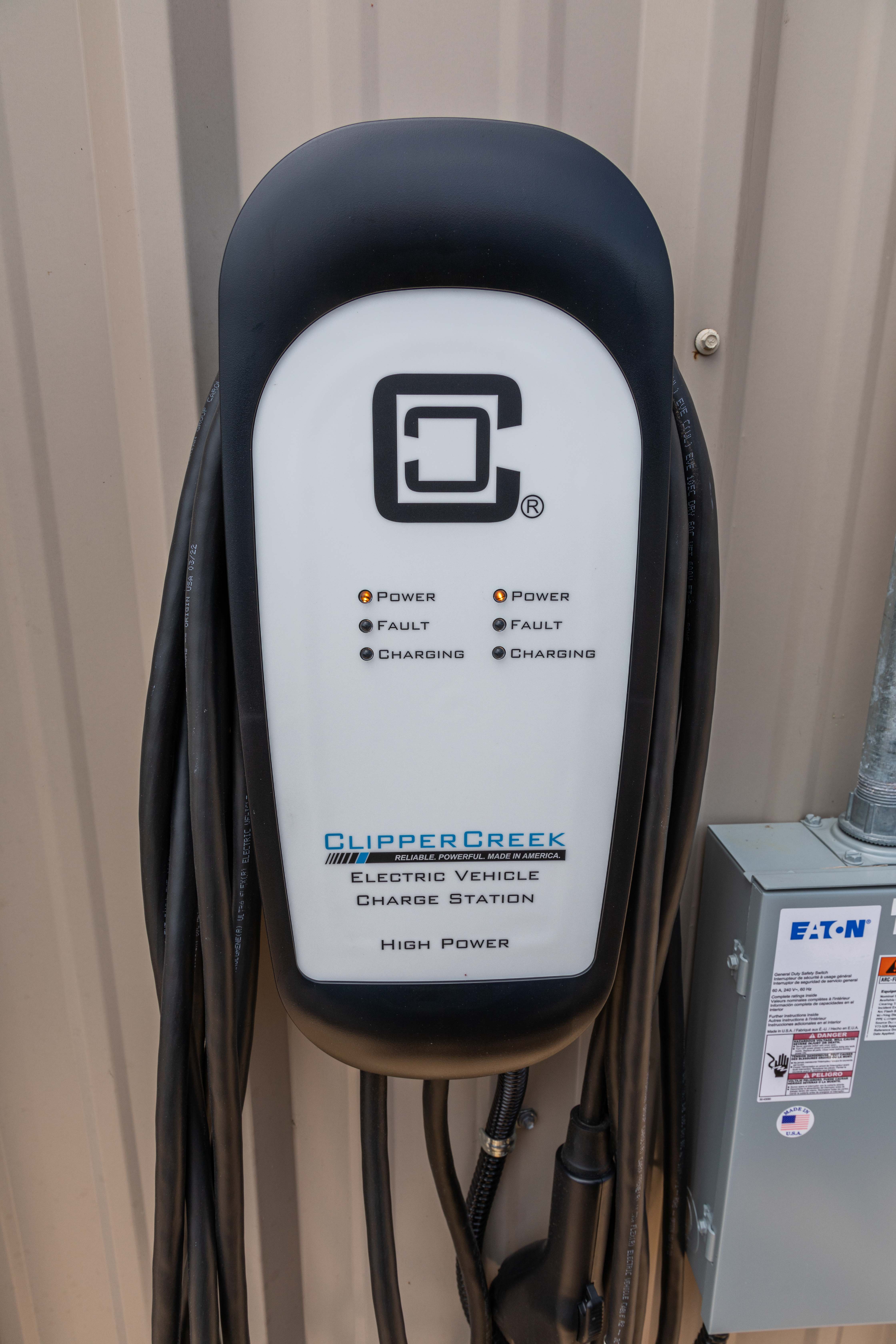
DOE Green Fleet Award funds will partially be used to install additional electric vehicle supply equipment charging stations, like the one pictured, around the site.
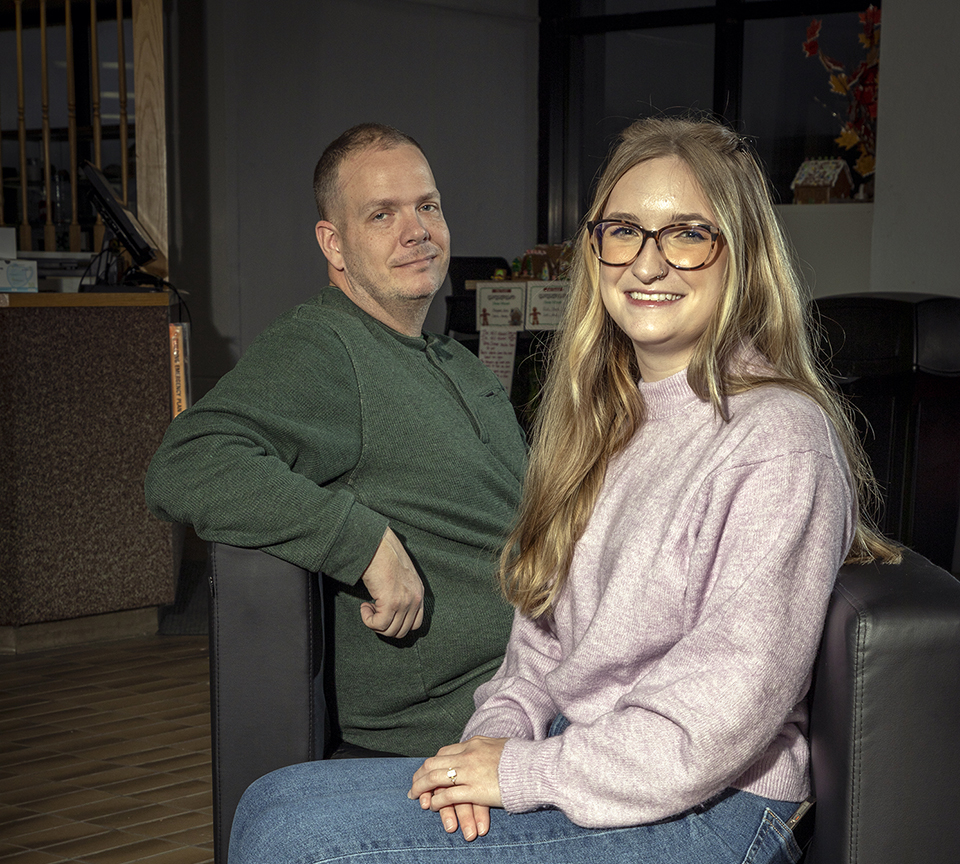
Jeremy Price and Chloe Green are helping Y-12 be environmentally responsible and prepared for the impacts of climate change.
“Their roles support the Y-12 mission by working to ensure that Y-12 becomes a more resilient site, including everything from sustainable procurement to supporting the development of sustainable, resilient solutions to address the identified climate impacts to Y-12’s critical assets and infrastructure,” said Aprell Patterson of Y-12’s Pollution Prevention Program.
The recently hired sustainability engineers support various initiatives across the site, including the Climate Adaptation and Resilience Plan, the Vulnerability Assessments and Resilience Plan (VARP), the Sustainable Climate Ready Sites (SCRS), identifying more sustainable solutions and products, determining waste minimization opportunities, supporting sustainable acquisition initiatives, and promoting a new carpooling program.
As a U.S. Navy veteran, Price became intrigued by a post military career in sustainability after traveling the world and seeing first hand the effects acidification, pollution, and climate change have on the environment. He is the new program lead for VARP and SCRS.
“We are all stewards of our environment and, as such, we have a duty to take care of it,” Price said. “Caring about site sustainability has a direct link to conservation of land and resources. The fewer resources we take, the more there are for future generations. I also think Y-12ers should feel a sense of pride knowing that we’re a part of something bigger than ourselves.”
Green is the lead for the new carpool program, which has already shown promise as a means to reduce greenhouse gas emissions. In just four months, carpooling at Y-12 has saved more than 2,000 gallons of gas, 47,500 miles traveled, and 20.3 tons of CO2 emissions.
In addition, Green has taken an interest in sustainable acquisitions. “I didn’t realize the different types of sustainable products available, nor how big of a role it plays at Y-12,” she said. “The program has acquired many items used here on site, such as cut resistant gloves made of plastic bottles, zero tree paper, and picnic tables and other furniture made of recycled materials. Sustainable acquisition will continue to grow and [through these efforts] procure more sustainable items to help reduce the footprint we create here.”
Sustainability efforts such as these have been recognized. Y-12 was recently bestowed the United States Department of Agriculture BioPreferred Program’s first Excellence in Biobased Procurement Award because of a bio based FR3 fluid it used to retrofill 20 transformers and for recycling nearly 20,000 gallons of transformer fluid.
The award is part of a nearly four decade sustainability history at Y-12. The first waste minimization and pollution prevention program was launched on site in 1985. From there, the Sustainability team has consistently shared initiatives to increase employee involvement. The overall goals are to establish and maintain services to support sustainable operations, including stewardship practices that take care of legacy issues, while protecting employees and promoting the wellbeing of employees, the public, and the environment.
“Since 1993, Y-12 has completed more than 2,220 sustainability activities, obtained a cost efficiency of more than $120.9 million, and achieved a waste reduction/avoidance of more than 3.17 billion pounds,” said Jan Jackson, Sustainability and Stewardship Program Manager.
“Sustainability isn’t about living a 100% green life,” Green said. “Sustainability is about finding the balance in order to continue to conserve and preserve resources and the environment for future generations. We have the power to make positive, sustainable changes that can help the mission and society.”
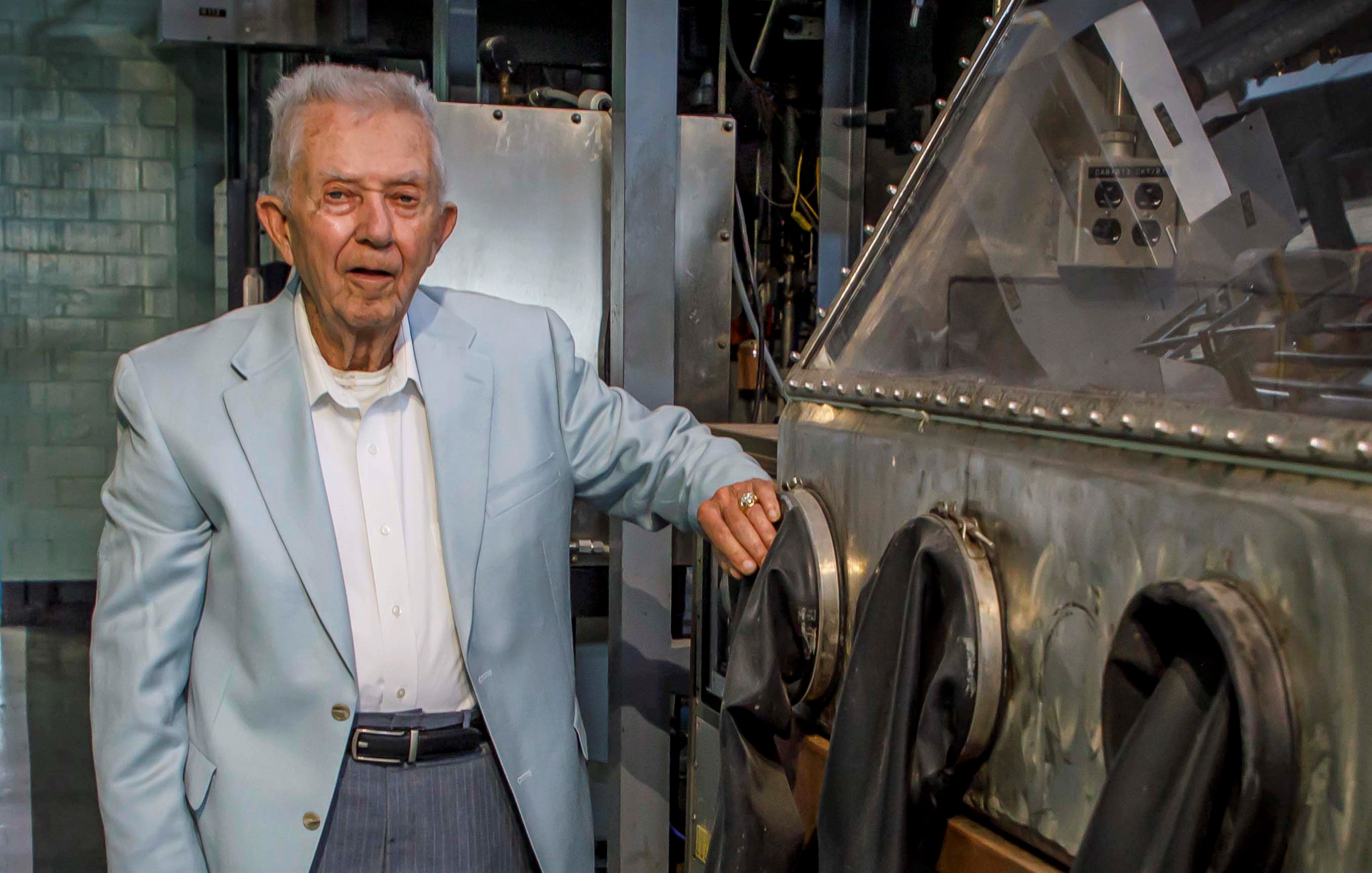
Bill Clark poses next to a glove box similar to one he worked with in the 1950’s
June 16, 1958: a day that is seared into Y-12’s history as the nation’s first nuclear criticality accident in a process facility. As the only remaining survivor of this accident, Bill Clark, now 90 years old, remembers it distinctly, and he recently returned to Y-12 for the first time since the mid-1960’s to share his story and to see how far the site has come in preventing similar accidents.
In 1958, Clark (referred to as “Employee H” in reports) worked as a chemical operator in the C1 Wing of Building 9212. On the day of the event, he was assigned to operate four EK evaporators approximately 50 feet from where the criticality occurred. Unbeknownst to him and others working that day, uranyl nitrate had been leaking through a valve in a temporary line connecting B1 and C1 wings.
At the time of the event, approximately 2:05 p.m., operators in C1 Wing were finishing an extensive inventory and cleanout process that took multiple shifts to complete. The final step before placing the system back into operation was to drain leak-test water from the pipes and safe tanks. However, the uranyl nitrate that had been leaking into the overhead pipes from B1 drained first, instead of water.
Clark recalls the moment the solution reached a sufficient level to react.
“I saw lightning bars zip-zip-zip across the ceiling going every which way,” he said. “I thought it was the welders and didn’t think anything of it. Then a fog started to descend in the room and the most God awful smell you can think of—worse than rotten eggs. That’s when the alarms went off.”
Clark’s story, and his return to Y-12, provide a stark reminder of the hazardous materials used every day across the Nuclear Security Enterprise—and the safety changes that have been put in place to prevent something similar from occurring today.
“The 1958 accident was an unfortunate event, but we learned a lot from it,” CNS Chief Nuclear Criticality Engineer Chris Haught said. “First and foremost we learned to keep large geometries out of areas where we process enriched uranium solutions. We also learned the importance of procedural control and conduct of operations. Most importantly, we learned to evaluate minor events and implement corrective actions to prevent a major event.” Fortunately for Clark he exited out the back door of C1 Wing instead of leaving his normal route, which would have taken him directly past the drum.
Everyone was instructed to start walking, Clark recalled, and they did not stop until reaching the Oak Ridge Skyway Drive-In Theater, roughly where Hobby Lobby is today. After sitting under a tree for multiple hours, Clark was instructed to get in line to have the film strip on his badge checked.
“That’s how they figured out where the accident happened,” Clark said. “We all started showing up with our film badges. I was 10 feet from the film checker when the meter hit the peg.”
It was that moment when Clark learned he had been exposed.
“I didn’t know I had been in a criticality when I was sitting under the tree,” he said. “I hadn’t felt nothing. I only knew what I had observed.”
Clark was rushed to the hospital for treatment.
“They gave me the most thorough scrub down of my life,” he said. “It felt like they were taking my skin off. They took blood from us. They took bone marrow from us.”
Exhaustive tests were done trying to determine how bad the accident was. In total, eight employees were exposed to high doses of radiation that day and all suffered long-term health effects including numerous forms of cancer. Clark endured multiple operations. To this day, he maintains a strict diet and takes a handful of medications every day to help him live. The radiation dosage levels received for each employee vary, but Clark accepts a 2002 estimate of 165 rem.
“We learned a lot of lessons from the 1958 accident,” Vice President of Mission Engineering Tony Boser said. “We’ve incorporated those lessons into our overall approach to safety at Y-12 through our procedures, our training, and in our engineering controls. All of these are designed to prevent another incident. But we can’t stop there. As we transform our site to meet our future mission demands, we are designing our facilities and our processes with the latest and most robust techniques to ensure safety in all aspects of our work. Both for our employees and our community at large.”
Following the interview, Clark re-lived his time at Y-12 with a tour of the plant. He shared stories of his work in Buildings 9201-4, 9201-5, 9204-2, and 9212. As a piece of advice to employees doing similar work today, Clark stressed the importance of wearing proper PPE.
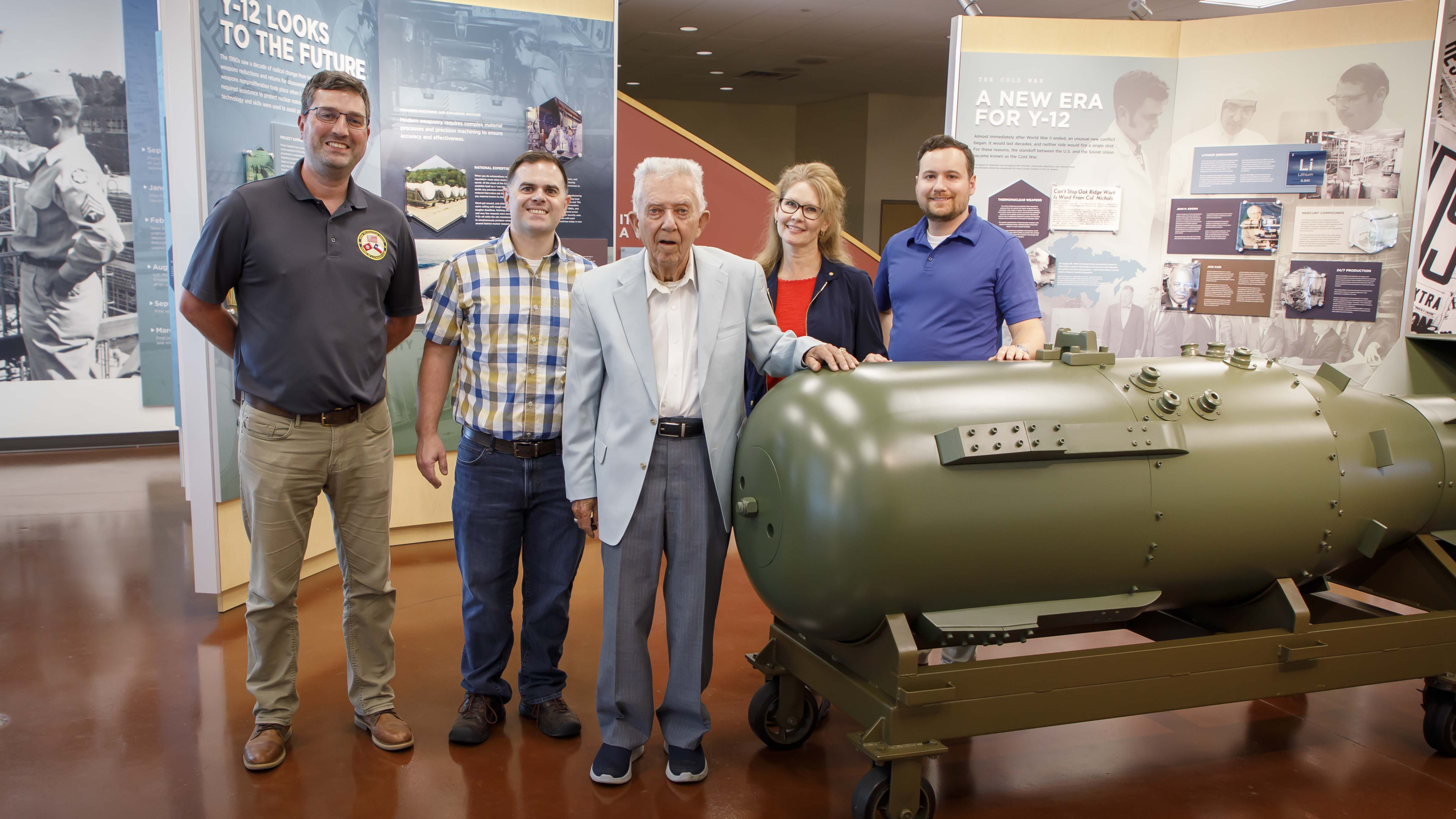
Bill Clark is welcomed to Y-12 by NNSA Production Office employees nearly 65 years after being exposed to high levels of radiation during the 1958 Nuclear Criticality Accident.
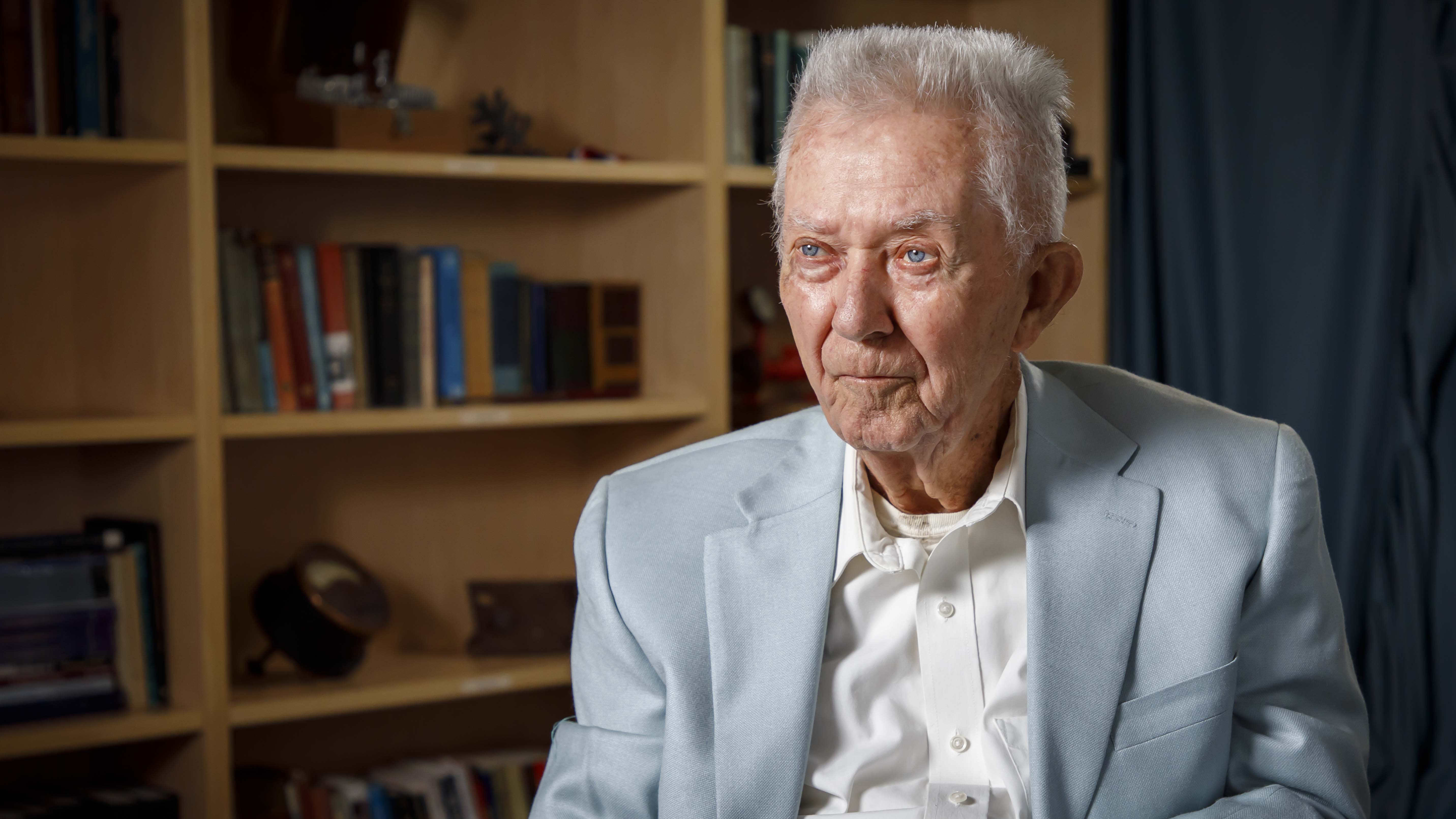
Bill Clark recalls his experiences during the 1958 Nuclear Criticality Accident
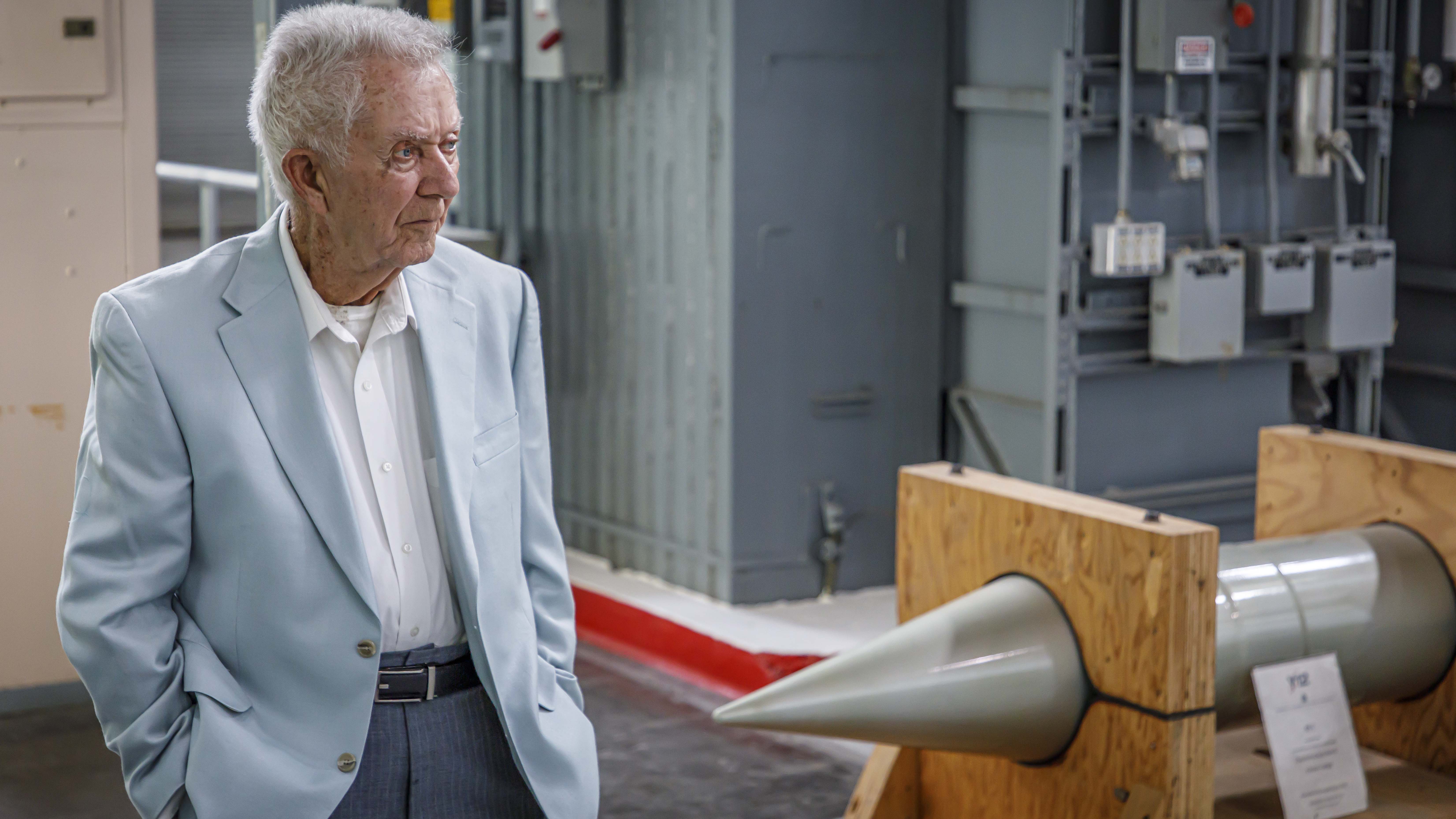
Bill Clark tours Building 9731, the first building complete at the Y-12 National Security Complex in 1943.
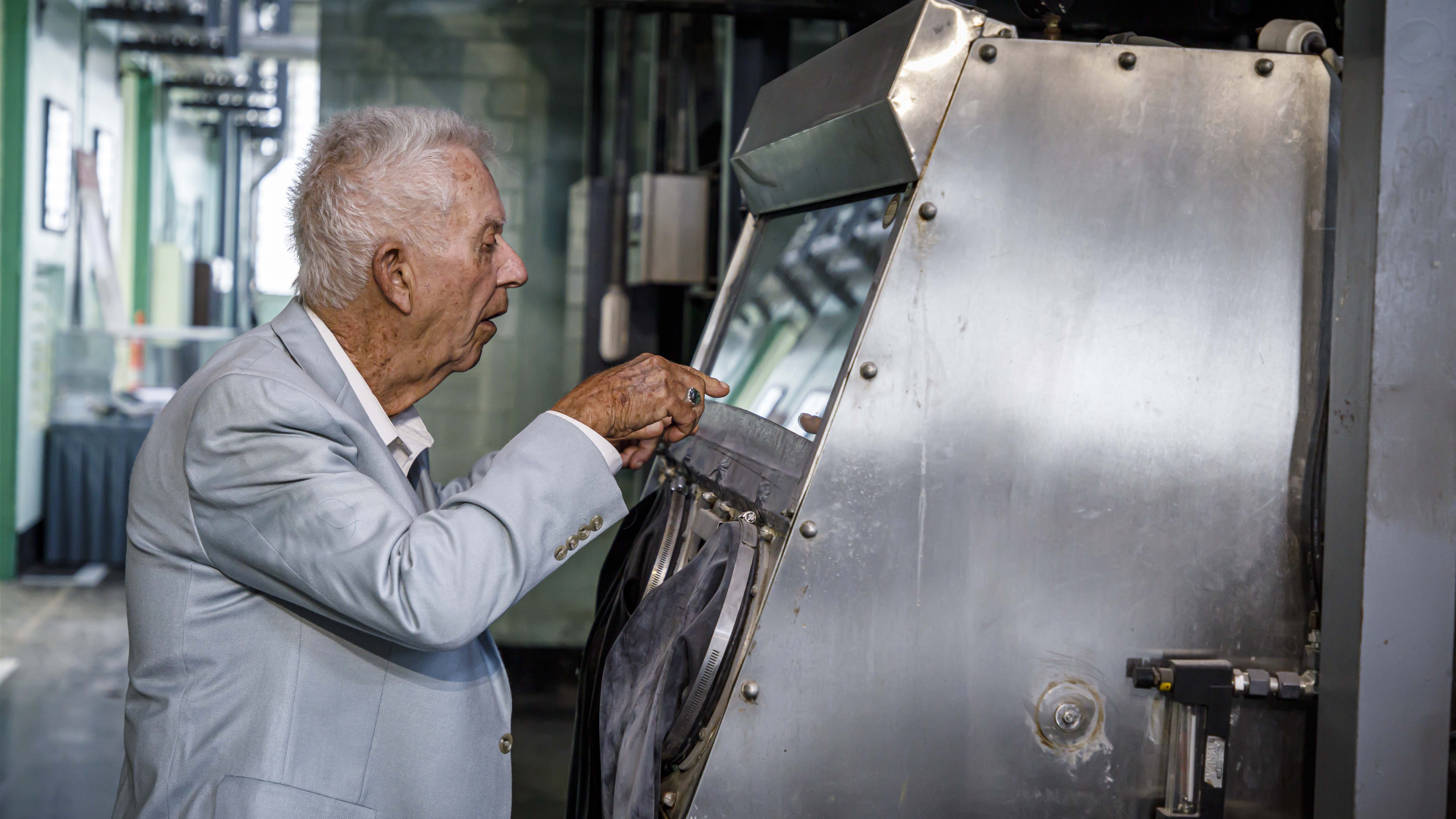
Bill Clark discusses work he did in a glovebox similar to what was used during the 1950’s.
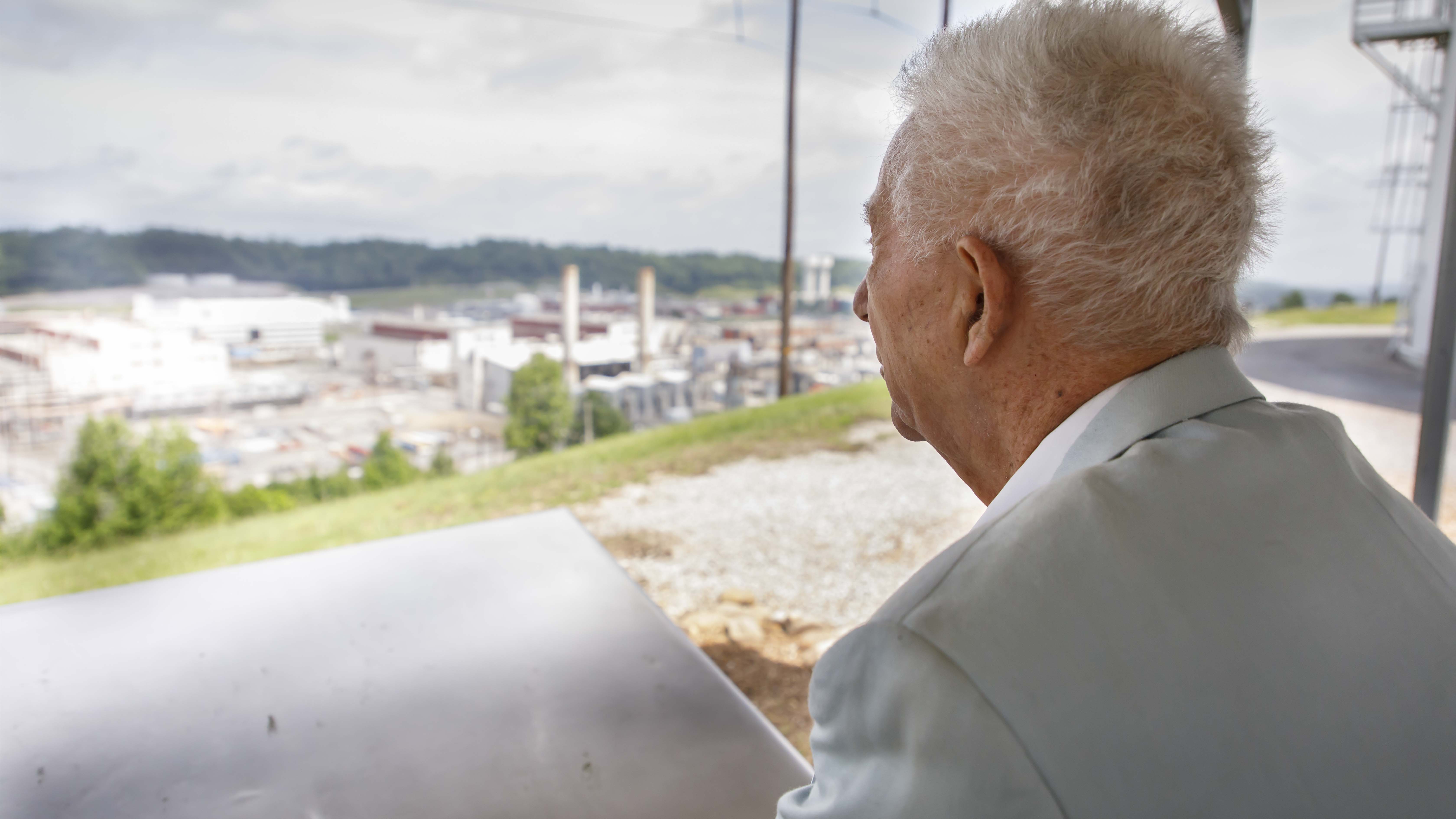
Bill Clark overlooks the Y-12 Plant while sharing stories of his work in various buildings
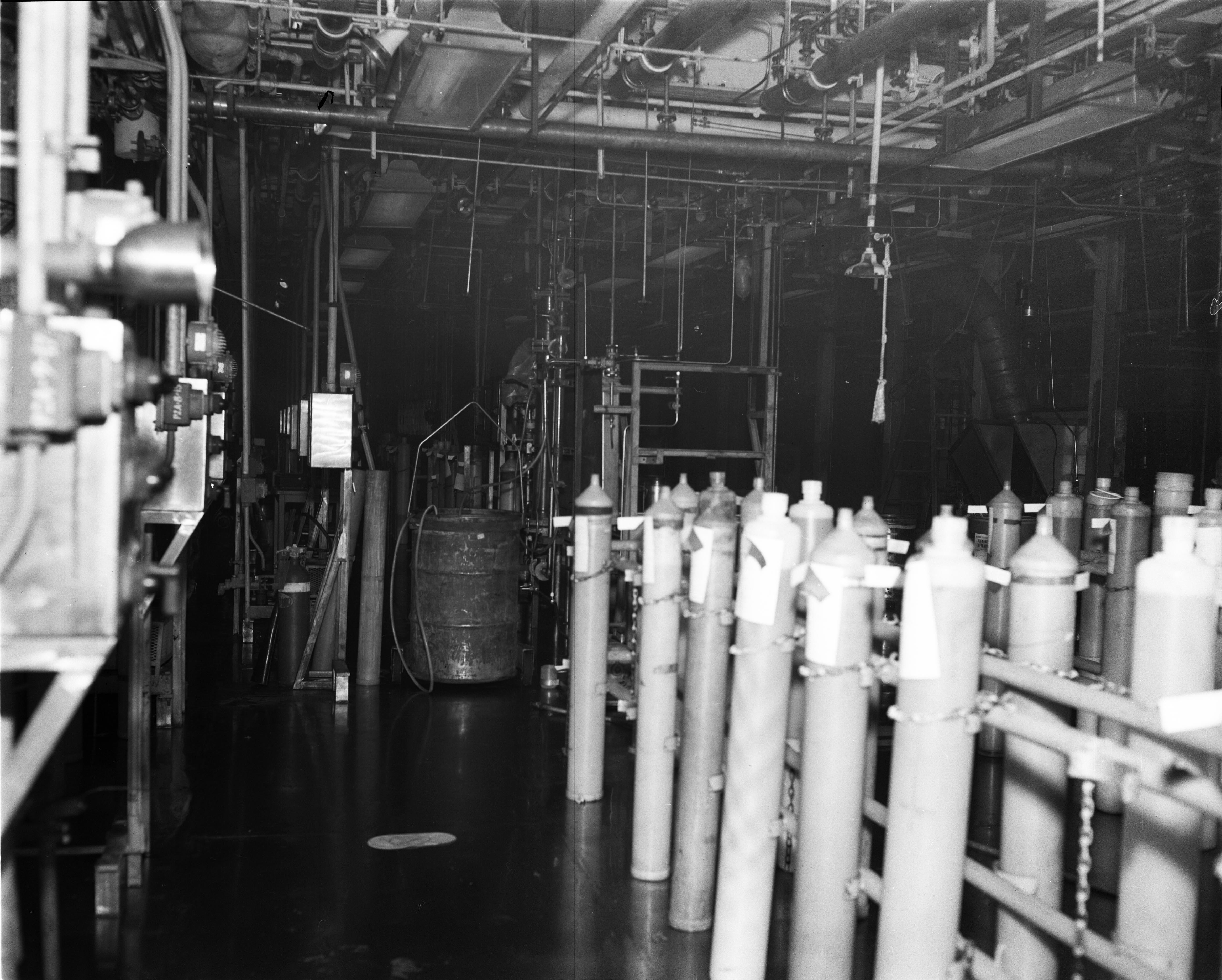
Building 9212 C1 Wing following the 1958 Nuclear Criticality Accident
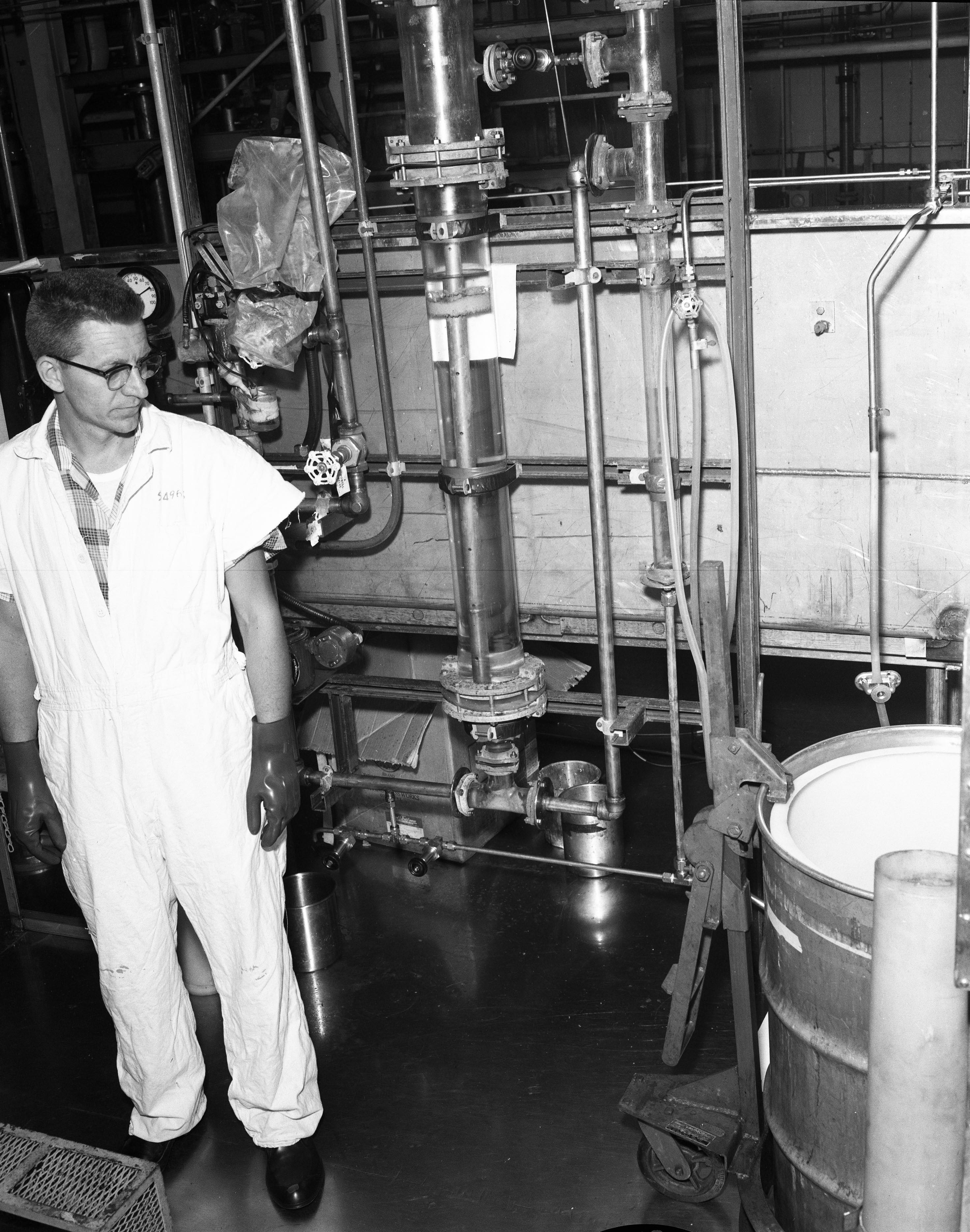
Re-enactment of employee “A” position in proximity of the drum at the time of the incident.
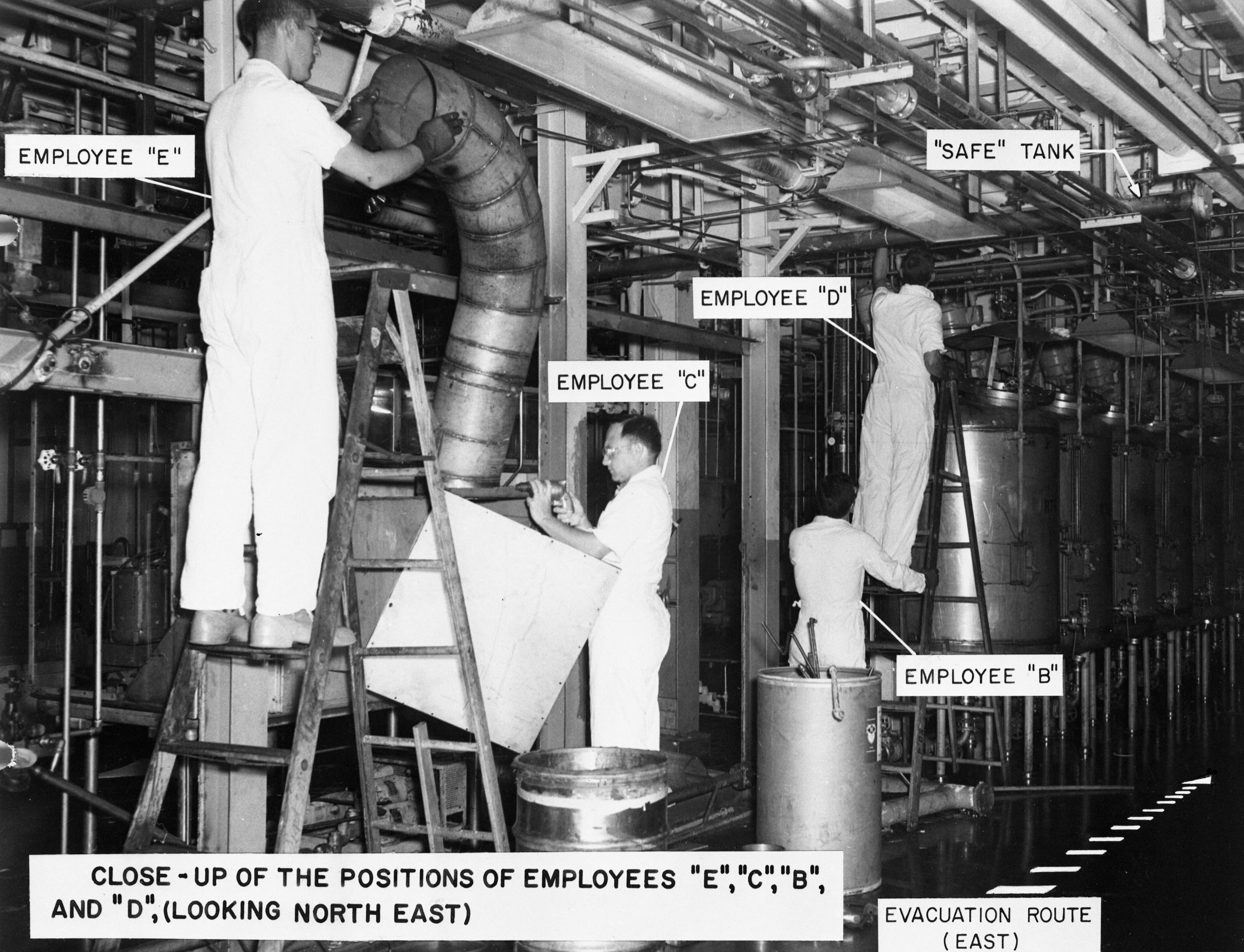
Re-enactment of positions employees in proximity of the drum at the time of the incident.
